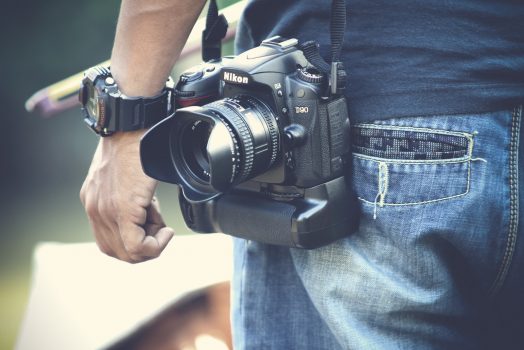In photography you will stumble upon diverse ways to portray your subject matter. These ways are more universally known as processes and consist of white and black or monochrome, full-spectrum, color photography, and the most modern to date – digital photography. The process which you employ will create inconsistent effects on the end result.
Whenever you happen upon a white or black photograph, this is done through the monochrome process. This process was always used before the emergence of color in photography. These days, regardless of the alternative of color and other means, black and white photograph appeals to both basics in the world of photography, due to its effortlessness, and those who want to capture exquisiteness and stop the aging procedure. Moreover, it’s the detailing in its lighting, composition, perception and the context that draws the viewer as opposed to the liveliness of color. To create pictures in black and white you will necessitate a black and white film or you can stage-manage color images by using computer software.
Then we come to color photography. This was all made probable in the mid 19th century due to the discovery of James Clerk Maxwell. What he revealed was that color photographs could be made using green, red, and blue filters, a discovery which he showcased to the planet in 1861. The process has greatly developed eventually and can include the use of roll and sheet films, prints, color negatives and transparencies with slides.
Full- spectrum photography as Explained by Charles Bishop Pompano Beach Florida
Full- spectrum photography is obligatory in many specialized careers, like geology and forensics, providing a broad gamut of a film or camera sensor bandwidth. According to Charles Bishop Pompano Beach Florida, it can be employed to capture visible and near ultraviolet and infrared radiation, therefore its use in the sciences.
In disparity to the above methods, digital photography does not necessitate any chemical processing. These photographs are often maneuvered using computer and digital techniques. A smaller sensor format permits for wider zoom ranges and smaller lenses. Once you comprehend the diverse processes of photography, you can put your knowledge to experiment with diverse genres such as landscape, portraiture and wildlife photography.
As Charles Bishop Pompano Beach Florida says, portrait photography incarcerates the similarity in an individual or small group of individuals. Good instances of portrait photography are wedding ceremony photos. The thought is to capture the expression and mood on the subjects face and more often than not, that individual will be looking towards the lens in a tranquil position.
Landscape, nature and wildlife photography are very diverse, but what they all have in common is the ways to detain elements within nature, whether it be photographs of scenic views of a mountain range, lions stretching out in the sun, or a close-up of a bunch of flowers. Many landscape photos eliminate any human subjects and concentrate entirely on the beauty of natural spaces. Landscapes are often produced with such tools as a large format camera, or a pinhole camera and tripod, generally with an extensive angle lenses (24 mm and 35 mm are particularly accepted).




